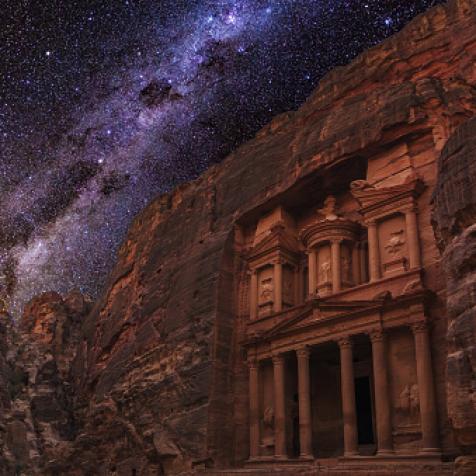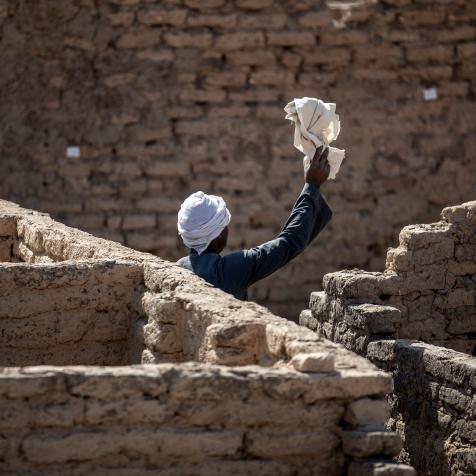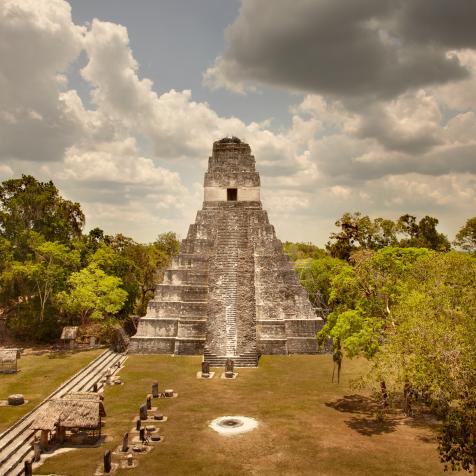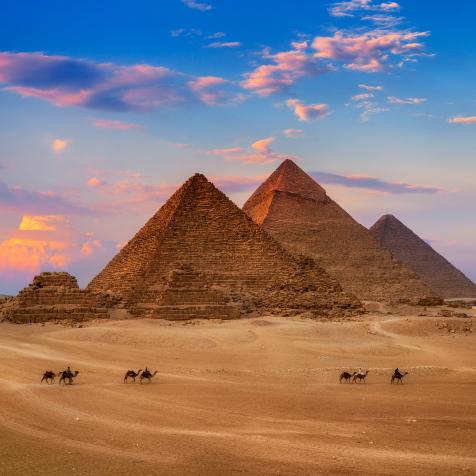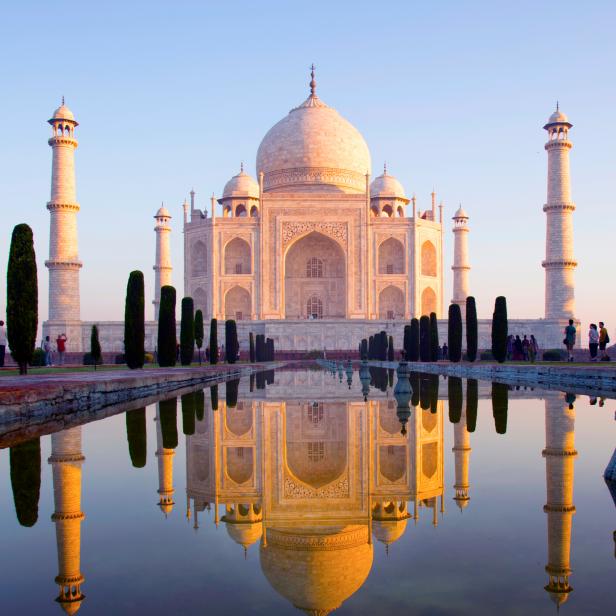
Grant Faint
The Romantic, Heartbreaking Love Story Behind the Taj Mahal
Ivory white columns rise from the earth, framing the central masterpiece: an intricately carved marble domed structure stood on a square plinth, resplendent with arched doorways, and topped by a bronze moon that reaches for the sky.
The entire magnificent building is mirrored in a long reflective pool, fringed by symmetrical Cyprus and fruit trees that resemble both life and death. This man-made marvel is, of course, the breathtaking Taj Mahal, one of UNESCO’s seven new wonders of the world.
Rabindranath Tagore, one of India’s most beloved poets, famously called the Taj Mahal “a teardrop on the cheek of time”, and the story behind the structure lives up to its reputation.
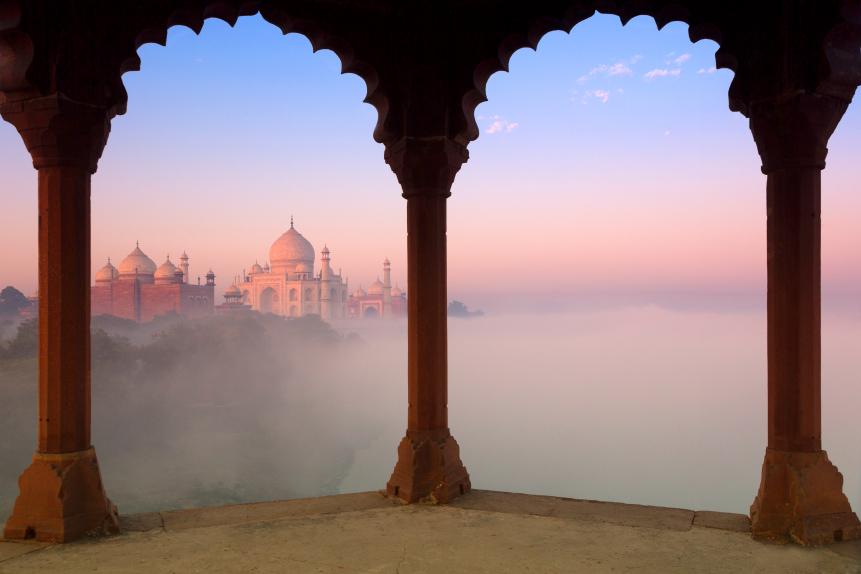
Adrian Pope
India, Uttar Pradesh, Agra, Taj Mahal and early morning fog framed by arches.
Contrary to popular belief, the Taj Mahal – which is located in Agra, Uttar Pradesh, India, is not a temple; in fact, it is a mausoleum. It was commissioned in 1631 by the Mughal emperor Shah Jahan, to house the tomb of his beloved wife, Arjumand Banu Begum – also known as Mumtaz Mahal–which means “jewel of the palace”, Mumtaz died whilst giving birth to their 14th child, Gahuara Begum. Construction began the following year, and the mausoleum was finally completed in 1648, while the stunning gardens were finished five years later.
Jahan first spotted his future wife in the bazaar at Agra, selling silks and beads. History has it that Jahan fell madly in love at first sight with Mumtaz, who was a Persian aristocrat. He pursued Mumtaz for five years until he married her in 1612–making her one of his wives (he already had two, as was the tradition).
Mumtaz has been immortalized as the epitome of feminine beauty, but she was also an astute political practitioner, and was entrusted with the royal seal, even accompanying Jahan on the battlefield–whilst pregnant!

Frédéric Soltan
The Taj Mahal is an ivory-white marble mausoleum on the south bank of the Yamuna river in the Indian city of Agra in Uttar Pradesh.
When Mumtaz died of postpartum complications, Jahan was inconsolable and plunged the imperial court into mourning for two entire years. He began planning the construction of the Taj Mahal, the ultimate testament of his love for his favorite wife. He summed Muslim artists and architects from all across the land to design a mausoleum worthy of Mumtaz. Altogether, 20,000 artisans assisted in building the Taj Mahal and its gardens, helped by 1,000 elephants, over 22 years.
The Taj Mahal is unparalleled in beauty, incorporating Persian, Ottoman, and Islamic art and traditions, and its design is inspired by descriptions in the Koran of heaven. It is also a masterpiece of symbolism. Its bilateral symmetry is dominated by a central axis, an image that has long been used to demonstrate a ruling force that brings balance and harmony. The structure is also aligned in the cardinal north-south direction and the corners have been positioned so that when one stands in the center, the sun can be seen rising and setting on the north and south corners during the summer and winter solstices. Thanks to the flawless white marble, the building appears to change color depending on the time of day and the weather, ensuring the sky is incorporated on the surface of the building–as well as in the reflective pools, a sure way to imply the presence of the Islamic god Allah.
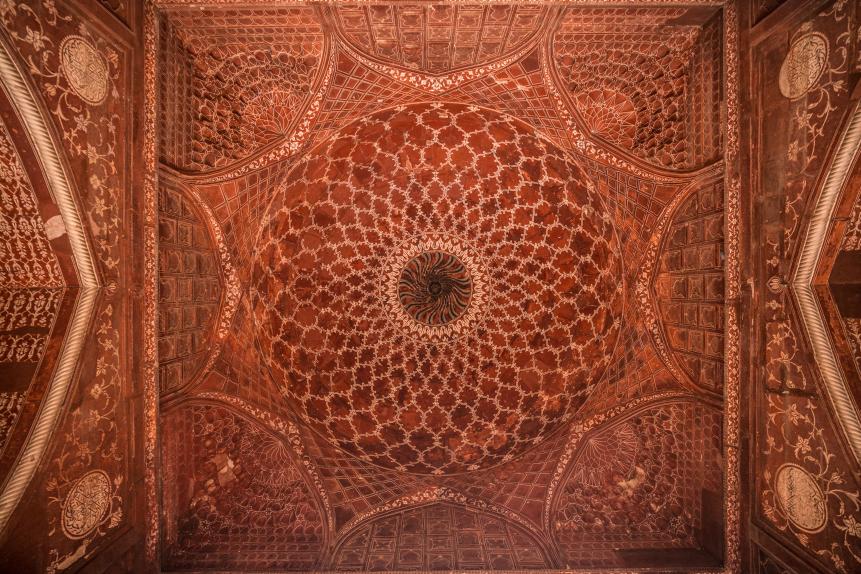
Nick Rains
The intricate ceiling of the Taj Mahal Mosque.
The Taj Mahal is an architectural masterpiece, and the fact that there is an exquisite love story behind its inception means it will continue to stand the test of time for centuries to come.









